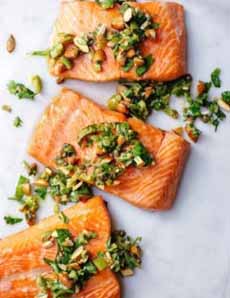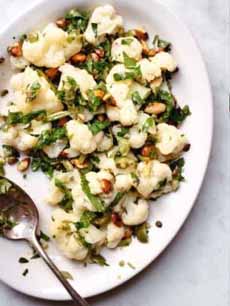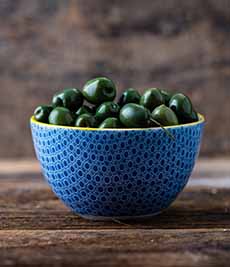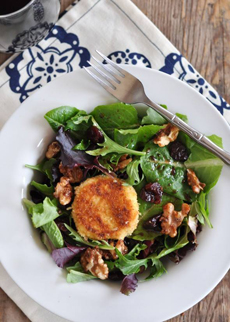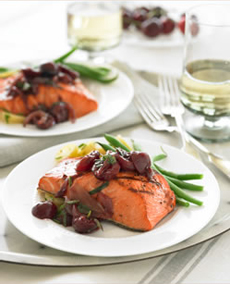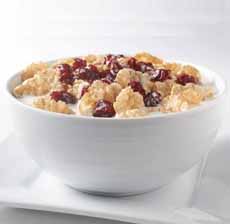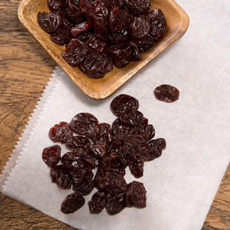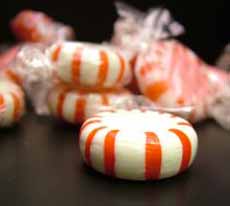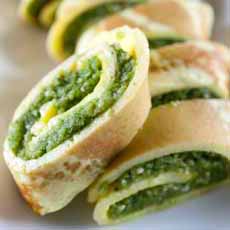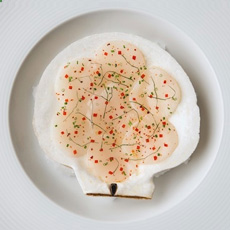
[1] A “flower” presentation from C Chicago (now Ocean Cut Chicago
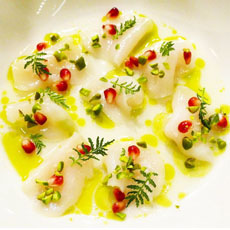
[2] Scallop crudo with pistachio oil, pomegranate arils and fresh herbs, from La Pecora Bianca | NYC.

[3] Arugula pesto and pink peppercorns plus gold leaf, at Sushi Roku | Katana.
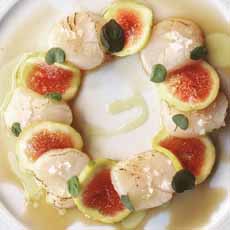
[4] Briefly seared with fresh figs at Sushi Roku | Scottsdale.
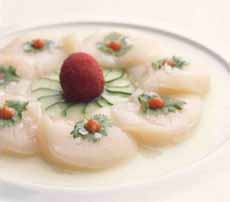
[5] Asian-style with cucumber, red bell pepper sauce, cilantro and fresh lychee from Nobu | Los Angeles.
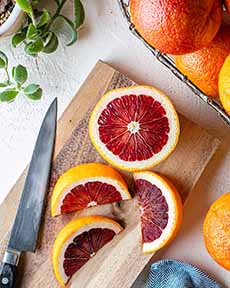
[6] Blood oranges, delicious with scallops (photo © Gelson’s Market).
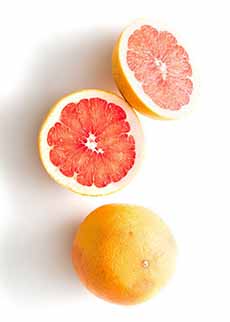
[7] Cara cara oranges, a mutation of the navel orange, have a pink inside (photo © Good Eggs).
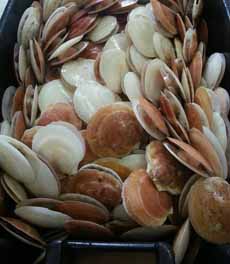
[8]Fresh from the ocean: live sea scallops. Note that different environments produce different shells: smooth or ridged, and a variety of colors (photo © The Local Catch).
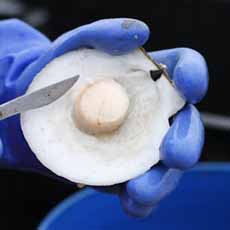
[9] Removing the scallop from the shell—the membrane and coral have already been removed (photo © AP | Robert F. Bukaty)..
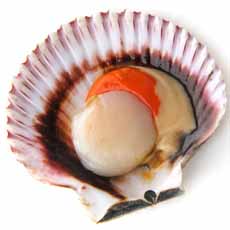
[10] Scallop with its coral, with the membrane removed (photo © Fish On Friday.
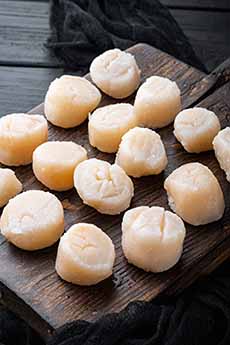
[11] The delicious result (phto © Iliane Soleni | Panther Media).
|
|
We love sashimi, we love scallops, we love scallop ceviche, and we love how easy it is to make a beautiful raw scallop appetizer (or lightly seared, if you insist).
If your family or guests don’t like the idea of “sashimi,” use the Italian word, for raw fish: crudo.
Our very favorite is to slice sea scallops in half and plate them a bit of EVOO, a splash of yuzu, a garnish of salmon caviar or tobiko, and if we have them, a sprinkle of microgreens or minced chives.
For a dinner party, with all the other demands of the kitchen, we like to start the meal with a flavorful appetizer that takes very little time to prepare.
It’s a great dish for warm or cold weather.
You can serve the scallops family-style on a platter, or individually plated. Either way, check out the garnishes below.
For wine: Sauvignon blanc is a favorite of ours; but also look at gewürtztraminer, grüner veltliner, pinot blanc or riesling. Big, oaky chardonnays need not apply.
Be sure to check out the recipe for Raw Scallops With Citrus, below.
Also below, the different parts of the scallop. (You learn something new every day!)
SERVING SUGGESTIONS FOR RAW SCALLOPS
First, add some color. Pale scallops on a pale plate need some visual excitement. Think red and green accents. When trolling the produce aisles, look for bright colors.
Caviar: salmon, sturgeon, tobiko or flavored whitefish caviar (the different types of caviar).
Heat: chile-infused olive oil, thin-sliced jalapeño, Thai or other red chile
Japanese accents: edamame, grated ginger, julienne of nori (seaweed sheets), nori komi furikake (seasoned seaweed flakes), seaweed salad, toasted sesame seeds, togarashi (spice mix).
Microgreens, sprouts, leafy herbs (basil, cilantro, mint, parsley) or minced chives.
Peppery vegetables: arugula, radish, watercress.
Red: diced red bell pepper, pink peppercorns, pomegranate arils, red chile flakes or finely minced red jalapeño.
Salad course: dress mesclun and red onion salad with olive oil and lemon; top with raw scallops and optional kalamata olives. Or, make a beet, cucumber or red cabbage salad, carefully flavoring with herbs and citrus zest. Place it in the center of the plate and surround it with the scallops.
Seasonal: ramps, red grapefruit, spring peas and pea shoots, raw corn kernels, rhubarb, etc.
Surf and turf: with cooked bacon, Chinese sausage (but nothing too spicy that will overwhelm the delicate scallop flavor).
Sweet: with mango, strawberries and an orange juice-sherry vinegar-olive oil dressing.
Three ways: sliced raw scallop, scallop tartare, ceviche or a grilled scallop.
More: black olives, capers, diced or sliced fruit, flavored sea salt, snow peas, sugar snap peas, wildcard (anything you like!).
Next, pick your dressing:
We like to put the dressing on the plate, and lay the scallops on top of it.
Dabs of puréed vegetable or pesto (think seasonal, e.g. pea or rhubarb purée in spring)
Basil or rosemary infused olive oil
Lemon vinaigrette or rice wine vinaigrette
Salsa cruda/pico de gallo or other favorite
EVOO, the more flavorful, the better
Infused olive oil (basil, garlic, rosemary, etc.)
Nut oil (hazelnut, pistachio, etc.)
Depending on what you use, consider an optional lemon or lime wedge.
Onto our featured recipe. Because it’s winter as we write this, we’re going seasonal with beautiful citrus.
Any citrus works, but we especially like red grapefruit, blood orange (photo #6), and cara cara orange (photo #7). How about a medley of all three?
RECIPE: RAW SCALLOPS WITH CITRUS
Ingredients
Sea scallops, the largest you can find
Citrus of choice
Sea salt
Seasoning of choice: chili flakes or fresh-ground pepper, fresh dill, other favorite
Optional condiment: extra virgin olive oil
Optional garnish: dill sprig or citrus zest
Preparation
1. PEEL the citrus and remove the pith. Slice the fruit into widths that will match the scallops (to the extent possible).
2. RINSE the scallops and slice horizontally. You can choose how thick or thin to slice them, but aim for four slices per scallop.
3. PLATE the fruit and scallops. Depending on their comparative sizes, you can plate them as shown in the photo, or place the scallops atop the sliced fruit.
4. DRIZZLE a small amount of the optional olive oil over the food, or in a circle or droplets around it. Sprinkle with sea salt and optional chili flakes. Garnish as desired (you can grate citrus zest over the dish, or sprinkle it around the rim of the plate) and serve.
KNOW YOUR SCALLOPS
Parts Of The Scallop
Scallops are bivalves, a class under the family Mollusca. Bivalvia is a group of sea or freshwater creatures that also includes clams, cockles, mussels, and oysters. They have no head, but consist of two shells attached by a hinge (photo #8).
There are three edible parts inside: the creamy-white muscle meat, the orange coral/roe, and the frilly membrane that encloses the muscle (photo #10).
Unless you buy live fresh scallops, you won’t see the coral or the membrane.
If you do see live scallops (typically at the coast), buy them to experience the other two parts that, sadly, get thrown away when the meat is removed (because they can’t be sold for more money than it costs in labor).
How To Buy Scallops
It’s always best to buy seafood the day you plan to use it. When you buy fresh scallops, they should have a clean scent, no “fishy” aroma.
The scallop meat also should be beige, not white.
Watch Out For STP
White scallops indicate treatment with sodium tripolyphosphate (STP). STP is a safe food additive that is used to prevent the scallops from drying out. A little STP is okay.
But if the scallops look artificially white and/or are oozing a milky liquid, they’ve been over-treated with STP. This is deliberate, because it increases the weight of the scallops by causing them to absorb excess water.
You want to pay for scallop meat, not water. Plus, if you cook them, over-treated scallops won’t brown when seared; and the delightful fresh flavor will be impacted. Another scallop-buying tip:
Watch Out For “Jumbo” Scallops
Avoid jumbo “scallops,” which are not scallops but less expensive skate wings. When scallops are in short supply (or for other unscrupulous reasons), fishmongers can punch round “scallops” from skate.
In addition to their large size, another giveaway is that the scallops look like they’re falling apart.
We like skate, but when you’re paying for scallops, be sure that’s what you get.
Scallop Nutrition
Scallops are low in calories: 31 calories per ounce, or just 93 calories for a three-ounce starter portion, which delivers 6 grams of protein.
Scallops are a very good source of phosphorus and selenium, and a good source of calcium, copper, iron, magnesium, potassium, vitamin B12 and zinc.
Seafood does have a bit of cholesterol (15 mg/ounce), but no saturated fat. Enjoy!
> Check out the different types of fish and seafood in our glossary.
CHECK OUT WHAT’S HAPPENING ON OUR HOME PAGE, THENIBBLE.COM.
|
